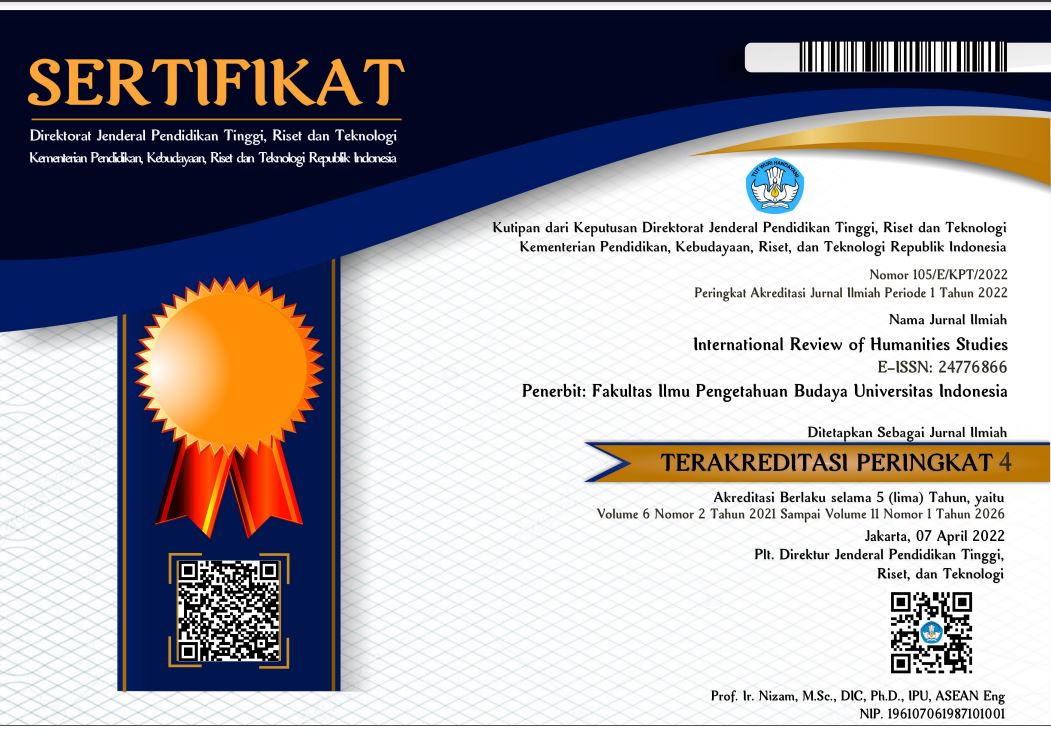International Review of Humanities Studies

Abstract
This article is an excerpt from an undergraduate thesis of the same title which focuses on A Series of Unfortunate Events, a children‟s book series by Lemony Snicket. This thesis explores how a culture of fear shapes childhood, which is represented in the series. By using qualitative textual analysis the research discusses how the series represent the way childhood is shaped by a culture of fear through the depiction of various characters and social institutions in the novels. This research also explores the author‟s attempts in challenging the notion that children are vulnerable by analyzing the Baudelaires‟ identity and vulnerability. Results suggest that A Series of Unfortunate Events demonstrates ambivalence in the perception of childhood. Social institutions that should create a safe space for children tend to further perpetuate the culture of fear for them. Furthermore, children‟s vulnerability is often taken advantage of by adults for their own interests. Results also suggest that for children, their childhood is shaped by a culture of fear that is created and maintained by adults
References
Blettner, Jan. (2005). Don't Read This: A Kleinian Analysis of Lemony Snicket's A Series of Unfortunate Events. Doctoral diss., The Wright Institute.
Bullen, Elizabeth. (2008). Power of darkness: Narrative and biographical reflexivity in A Series of Unfortunate Events, International Research in Children's Literature 1, no. 2: 200-212. Dictionary. “Punctilio.” Dictionary.com. http://www.dictonary.com/browse/punctilio [accessed November 28, 2016].
Franklin, Leanne and John Cromby. (2009). Everyday fear: Parenting and childhood in a culture of fear. The many forms of fear, horror and error: 161-174.
Furedi, Frank. 2007. The only thing we have to fear is the 'culture of fear' itself. http://www.spiked-online.com/index.php?/site/article/3053/ [accessed November 28, 2016].
Monk, Daniel. (2009). Childhood and the Law, in Whose „Best Interests‟? In An Introduction to Childhood Studies, 2nd ed., edited by Mary Jane Kehily, 177-197. New York: Open University Press. Snicket, Lemony. (1999a). The Bad Beginning. New York: HarperCollins.
Snicket, Lemony. (1999b). The Reptile Room. New York: HarperCollins.
Snicket, Lemony. (2000a). The Wide Window. New York: HarperCollins.
Snicket, Lemony. (2000b). The Miserable Mill. New York: HarperCollins.
Snicket, Lemony. (2000c). The Austere Academy. New York: HarperCollins.
Snicket, Lemony. (2001a). The Ersatz Elevator. New York: HarperCollins.
Snicket, Lemony. (2001b). The Vile Village. New York: HarperCollins. Kindle edition.
Snicket, Lemony. (2001c). The Hostile Hospital. New York: HarperCollins.
Snicket, Lemony. (2002). The Carnivorous Carnival. New York: HarperCollins. Kindle edition.
Snicket, Lemony. (2003). The Slippery Slope. New York: HarperCollins.
Snicket, Lemony. (2004). The Grim Grotto. New York: HarperCollins.
Snicket, Lemony. (2005). The Penultimate Peril. New York: HarperCollins. Kindle edition.
Snicket, Lemony. (2006). The End. New York: HarperCollins.
Stearns, Peter. (2008). Fear and History. Historein 8: 17-28. UNICEF. “Childhood Defined”. Unicef.org. https://www.unicef.org/sowc05/english/childhooddefined.html [accessed February 20, 2017]
Recommended Citation
Annapurna, Nur Aini and Hapsarani, Dhita
(2019)
"CHILDHOOD AND A CULTURE OF FEAR IN LEMONY SNICKET’S A SERIES OF UNFORTUNATE EVENTS,"
International Review of Humanities Studies: Vol. 4:
No.
1, Article 15.
Available at:
https://scholarhub.ui.ac.id/irhs/vol4/iss1/15
Included in
Arts and Humanities Commons, Communication Technology and New Media Commons, Counseling Commons, Critical and Cultural Studies Commons, Other Life Sciences Commons, Outdoor Education Commons, Public Affairs, Public Policy and Public Administration Commons



